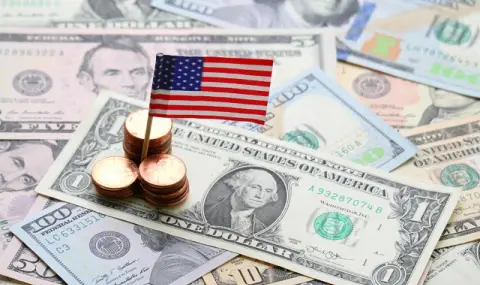Global markets are in a tailspin today, after the US declared a trade war on the whole world. ΠGradual attention is being directed at the methodology used by the administration of President Donald Trump to calculate the announced tariffs.
Trump and the White House have been posting a series of charts on social media showing the tariff rates that other countries, among them, are imposing on the United States. The column listing these proposed rates includes "Currency Manipulation and Trade Barriers" of the countries. The next column lists new U.S. tariffs on imports from each country, as well as from the European Union.
These rates are in most cases about half of what the Trump administration claims each country has "charged" United States.
How does Trump's formula work?
Πazarni observers quickly tried to understand the formula, which led to confusing results. Many analysts, including journalist and author James Cyprowiecki, have argued that the US appears to have divided the trade deficit by the amount of imports from a given country to arrive at the tariff rates for individual countries.
Such a methodology does not necessarily conform to the conventional approach to calculating tariffs and suggests that the US has only considered the trade deficit in goods, neglecting trade in services. This is very inaccurate, because in the services sector, American companies have a dominant position in a number of markets, as noted by the executive director of the American Chamber of Commerce in our country, Ivan Mihailov, to Moneu.bg.
For example, the US claims that China imposes a tariff of 67%. The US will have a deficit of $295.4 billion with China by 2024, while imports are worth $438.9 billion, according to official data. When $295.4 billion is divided by $438.9 billion, the result is 67%. The same mathematics holds true for Vietnam.
An interesting coincidence, noted on social media, is that ChatGRT proposes exactly such a method for improving the trade deficit through tariffs...
Explanations and/or justifications
The US Trade Representative's office has laid out its approach on its website, which looks something like this: similar to what observers had already established, with some differences.
"While individually calculating the trade deficit effects of tens of thousands of tariff, regulatory, tax and other policies in each country is difficult, if not impossible, the narrow combined effects can be represented by calculating at the tariff level, corresponding to a reduction in bilateral trade deficits to zero," the USTR website says.
This is not a particularly good explanation for the fact that, for example, the Australian island of Hopfolk receives a 29% tariff, while Australia itself only receives a 10% tariff. ΠThe quote from a virtually uninhabited place in the world is also interesting.
"The formula refers to trade imbalances with the US, not to reciprocal tariffs in terms of tariff levels or non-tariff distortions. "This makes it very difficult for Asians, especially poorer Asian countries, to respond to American demands for tariff reductions in the short term, so the criterion is to buy more American goods than they export to the United States," commented Tring Nguyen, senior Asia economist at Natixis, in an interview with CNBC.
Trump is happy
Donald Trump reiterated his support for the tariffs, even as financial markets have been rattled by the plans. "I think it's a lot of good. It's like surgery on a patient and it's a big deal. "The pizzas are going to flourish. The country will flourish," the head of state declared.
Contrary to Trump's optimism, major indices rose following the announcement of tariff plans by the countries. There has been talk of a sharp increase in the risk of recession both in the US and globally.
As the parties prepare to negotiate ways to ease new US tariffs, several major trading partners are planning to strike back.
China, hit with an average tariff rate of 54%, is expected to respond, while European leaders condemn tariffs and prepare countermeasures.
Πo-late on Thursday, Mexico will announce its own measures, while Canadian Prime Minister Mark Carney announced a 25% tariff on American cars and trucks, but exempted auto parts.
